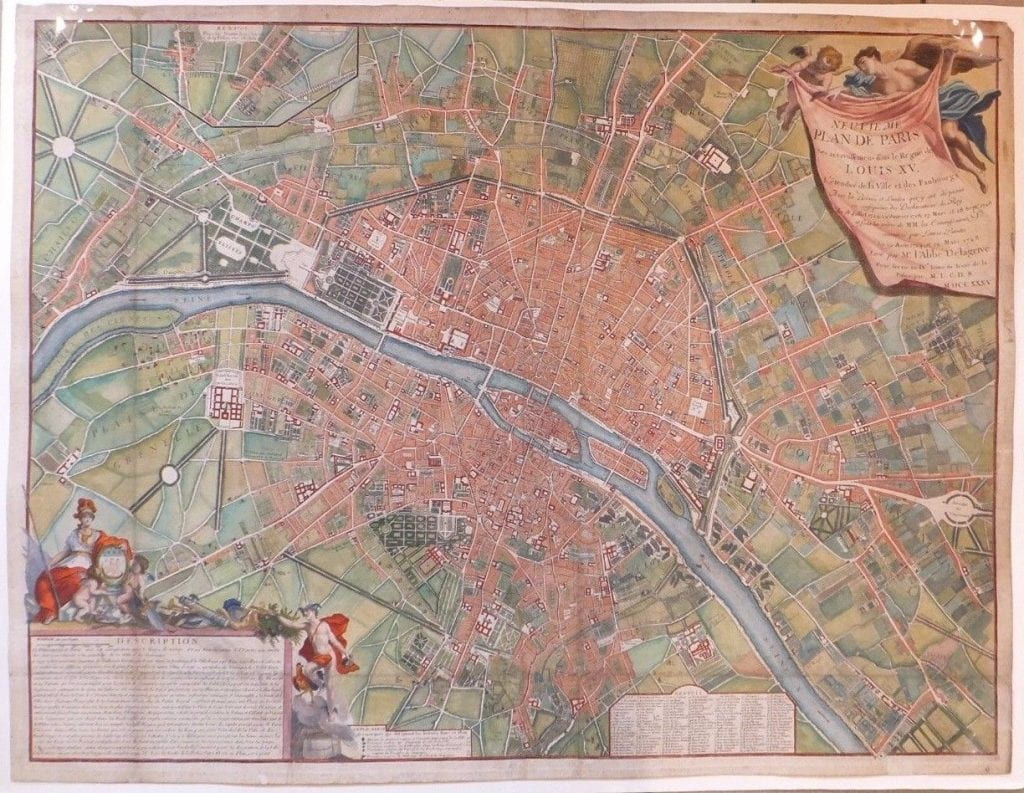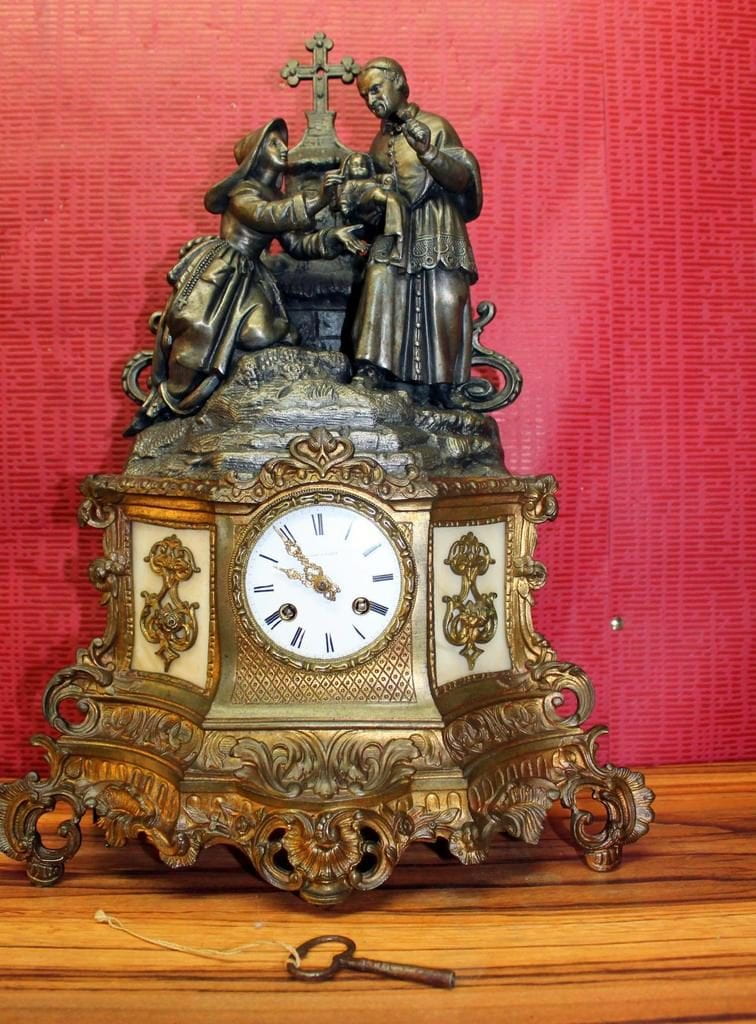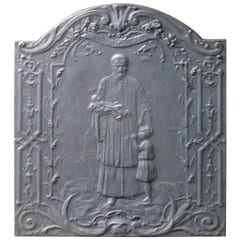
The Vincentian Collection at the Archives and Special Collections Department of DePaul University has acquired a rare map of Paris Jean Delagrive (1689-1757) Nicolas de La Mare (1639-1723) Neuvième plan de Paris ses accroissemens sous le règne de Louis XV. L’Etendüe de la ville et des faubourgs avec les bornes et limites qui y ont été posées en conséquence des déclarations du Roy des 18 juillet 1724 ; 29 janvier 1726 ; 23 mars et 28 sept 1728 et sous les ordres de Mm. les commissaires nommés par lettres patentes des 12 août 1724, et 29 mars 1728. Paris, 1735. 61,6 x 84,6 cm. Grand plan de Paris dressé et publié par l’abbé Delagrive en 1735, et le dernier de la série des 9 plans de Paris dressés pour le Traité de la Police, ouvrage publié par Nicolas Delamare entre 1722 et 1738. Il est orné d’un titre inscrit sur une draperie tenue par un ange et une femme ailée. En bas à gauche, le cartouche contenant la description du plan est orné de Minerve entourée d’amours dessinateurs, à laquelle Mercure rend visite. En haut à gauche, en carton, figurent les limites de La Chapelle et de La Villette. Contient une table de renvois : 1-58, une description des accroissements et embellissements, une explication des marques qui désignent les bornes dans ce Plan. RARE Plan très décoratif orné de ses 2 cartouches figuratifs. Sur papier vélin fort, en couleurs A l’origine ce plan était plié en 4. Jean Delagrive (né en 1689 à Sedan – mort en 1757) était un prêtre lazariste français, connu pour ses contributions à la cartographie et à la géométrie. Il a été le géographe attitré de la ville de Paris. Il était également membre de la Société Royale de Londres. Après de premières études en Ardennes, il vient à Paris et entre dans la congrégation de la Mission ou congrégation des prêtres de Saint-Lazare. Ordonné prêtre, il est envoyé en Pologne et enseigne ainsi la théologie à Cracovie en 1713. En 1714, il est de retour sur Paris et se consacre à la géométrie et à la cartographie. Il publie en 1718 le plan de la Capitale, publication qu’il estime trop imparfaite. Il en détruit les planches et s’attache désormais à obtenir des publications plus fidèles de ses relevés. Il est nommé géographe de Paris. Il est chargé notamment de cartographier le cours de la Seine et de ses affluents. Il publie également en 1740 un ouvrage sur Les Environs de Paris relevés géométriquement. Le premier atlas de Paris et de sa banlieue (qui n’est pas encore qualifiée de banlieue mais d’environs) ainsi que la première carte détaillée de la Seine sont conservés au département des cartes et plans. Ses travaux sont marqués par une grande exactitude, et par la qualité de leur édition. Il collabore avec César-François Cassini sur la détermination de la méridienne de l’Observatoire de Paris. Conseiller auprès de Colbert, l’abbé Delagrive est à l’origine de l’emplacement de l’Hôtel des Monnaies de Paris, quai de Conti. Le projet de transfert en cet immeuble a été dessiné en 1750. C’est sur l’une de ses cartes que serait apparu pour la première fois le nom des Champs-Elysées. Il n’oublie pas non plus sa passion pour la géométrie et publie notamment 1754 un manuel de trigonométrie sphérique. Ces travaux sont d’ailleurs cités dans l’Encyclopédie ou Dictionnaire raisonné des sciences, des arts et des métiers.



